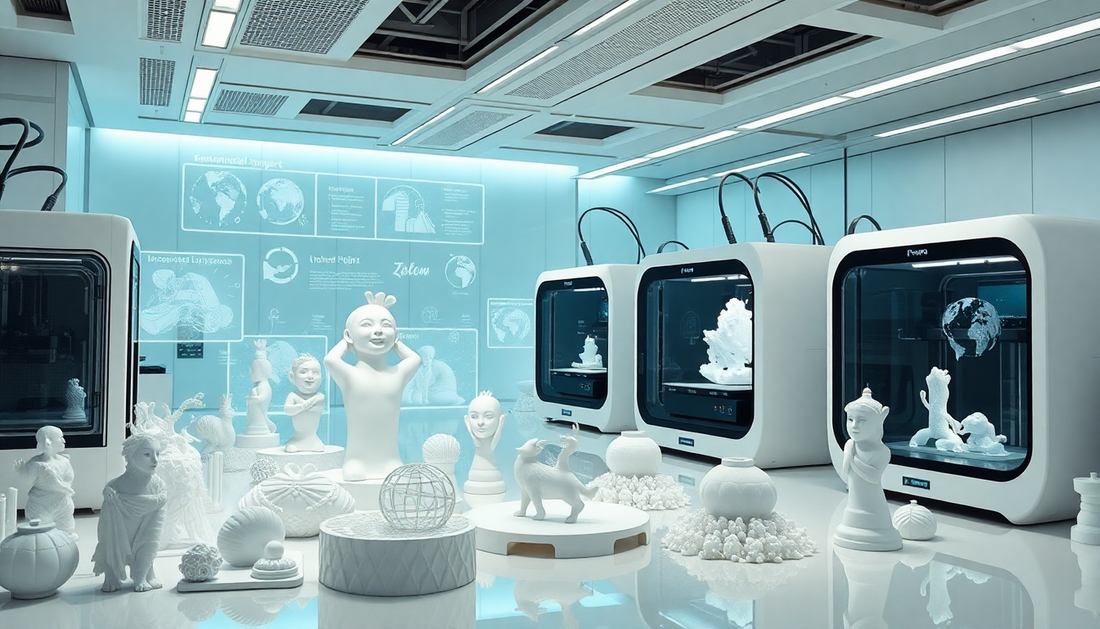
The Sustainable Future of 3D Printed Products
Share
In the ever-evolving landscape of modern manufacturing, the rise of 3D printing has emerged as a game-changer, offering a sustainable solution to the challenges faced by traditional production methods. As the world grapples with the pressing issues of environmental conservation and resource depletion, the potential of 3D printed products to revolutionize the way we create and consume has become increasingly evident.
The Environmental Impact of Traditional Manufacturing
Traditional manufacturing processes often rely on large-scale, centralized production facilities that consume vast amounts of energy, raw materials, and generate significant waste. The transportation of goods from these facilities to consumers further contributes to the carbon footprint of the entire supply chain. This linear model of production and consumption has placed an immense strain on the planet's natural resources, leading to a growing awareness of the need for more sustainable alternatives.
Reducing Waste and Resource Consumption
One of the primary advantages of 3D printing lies in its ability to minimize waste and resource consumption. Unlike conventional manufacturing methods that often produce large amounts of unused materials, 3D printing operates on a "just-in-time" principle, where products are created on-demand, reducing the need for excess inventory and the associated waste. This precision-based approach not only conserves raw materials but also minimizes the energy required for production, as 3D printers can operate with greater efficiency and flexibility.
Localized Production and Reduced Emissions
Another significant benefit of 3D printing is its potential to decentralize the manufacturing process. Instead of relying on centralized production facilities, 3D printing enables localized production, where products can be created closer to the point of consumption. This shift reduces the need for long-distance transportation, which in turn lowers the carbon emissions associated with the supply chain. By bringing production closer to the end-user, 3D printing can significantly reduce the environmental impact of product distribution, contributing to a more sustainable future.
The Circular Economy and 3D Printing
The principles of the circular economy, which emphasize the reuse, recycling, and repurposing of materials, align seamlessly with the capabilities of 3D printing. This synergy opens up new avenues for sustainable product design and manufacturing.
Closed-Loop Recycling
One of the key aspects of the circular economy is the concept of closed-loop recycling, where materials are continuously reused and repurposed. 3D printing lends itself well to this approach, as many 3D printing materials, such as thermoplastics, can be melted down and reused in subsequent print jobs. This closed-loop system reduces the need for virgin raw materials, minimizing the environmental impact associated with resource extraction and processing.
Customization and Reduced Obsolescence
3D printing also enables a higher degree of product customization, allowing for the creation of tailored solutions that better meet the needs of individual consumers. This customization can lead to a reduction in product obsolescence, as consumers are less likely to discard items that are specifically designed for their needs. By extending the lifespan of products, 3D printing can contribute to a more sustainable consumption model, where resources are used more efficiently and waste is minimized.
The Future of Sustainable 3D Printing
As the technology continues to evolve, the potential for 3D printing to drive sustainable practices in manufacturing and consumption is only expected to grow. Advancements in materials science, energy efficiency, and recycling processes will further enhance the environmental benefits of 3D printed products.
Innovative Materials and Recycling Processes
Researchers and manufacturers are actively exploring the development of new 3D printing materials that are derived from renewable, biodegradable, or recycled sources. These innovative materials, such as bioplastics, recycled plastics, and even organic composites, can significantly reduce the environmental impact of 3D printed products. Additionally, the refinement of recycling processes for 3D printing materials will enable a more robust closed-loop system, further enhancing the sustainability of this technology.
Distributed Manufacturing and On-Demand Production
The decentralized nature of 3D printing is also poised to transform the way we approach manufacturing and distribution. As 3D printing becomes more accessible and widespread, the concept of distributed manufacturing, where products are created closer to the point of consumption, will become increasingly prevalent. This shift will reduce the need for large-scale, centralized production facilities and the associated transportation emissions, contributing to a more sustainable supply chain.
Collaboration and Knowledge Sharing
The 3D printing community has a strong culture of collaboration and knowledge sharing, which can further accelerate the development of sustainable practices. Open-source design platforms, online communities, and educational initiatives are empowering individuals and businesses to explore the sustainable potential of 3D printing. This collaborative approach fosters innovation, encourages the adoption of best practices, and helps to drive the widespread implementation of sustainable 3D printing solutions.
Conclusion
As the world grapples with the pressing challenges of environmental sustainability, the rise of 3D printing has emerged as a promising solution. By reducing waste, minimizing resource consumption, and enabling localized production, 3D printed products offer a sustainable alternative to traditional manufacturing methods. The synergy between 3D printing and the principles of the circular economy further enhances the potential for a more sustainable future.
Through continued advancements in materials, recycling processes, and distributed manufacturing, the impact of 3D printing on environmental conservation will only continue to grow. By embracing this transformative technology and fostering a culture of collaboration and knowledge sharing, we can collectively work towards a more sustainable tomorrow, where the products we create and consume are in harmony with the planet we call home.
